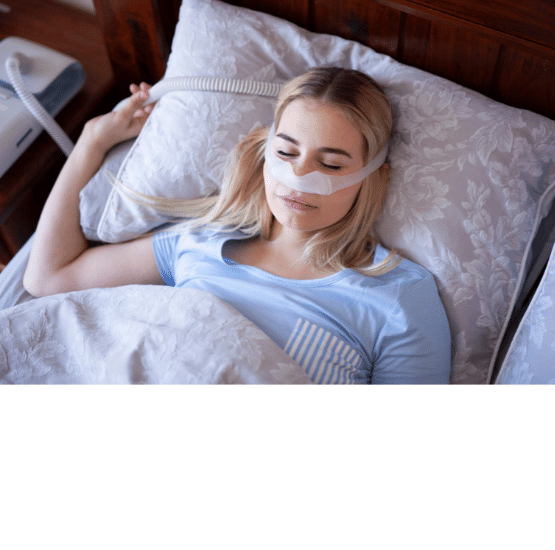Nasal masks | CPAP
For the therapy of sleep apnea
Among CPAP masks, the nasal mask is one of the most important mask types. A distinction is made between nasal masks, which enclose the nose including the bridge of the nose, and nasal cushion masks, in which the bridge of the nose is exposed and only the nostrils are covered. Both types of CPAP masks are well suited for stomach and side sleepers.
-
-
WISP Pediatrics Colorful CPAP Mask | Nose mask for children from Philips Respironics
Special Price €177.96 Regular Price €199.95-11% -
Nuance Pro CPAP Mask | Nose mask with gel padding frame by Philips Respironics
Special Price €105.83 Regular Price €118.90-11%
CPAP Nasal Masks
CPAP nasal masks for sleep apnea therapy are differentiated into the following types: Nasal Masks and Nasal Pillow Masks
Nasal Masks
Among CPAP masks, the nasal mask is one of the most important types. A nasal mask encloses only the nose and is often perceived by patients as more comfortable compared to full-face masks. They are smaller and lighter than full-face masks but offer more coverage of the nose than nasal pillow masks. They are designed to provide a clear field of vision and can also be used by side sleepers without causing leaks. They are suitable for people who breathe through the nose while sleeping. A nasal mask is not suitable for sleep apnea patients who breathe through the mouth at night. Mouth leaks can occur, which reduces the therapy pressure and consequently diminishes the efficiency of the CPAP therapy.
Nasal Pillow Masks
With this type of CPAP mask, the bridge of the nose is free, and the therapy air reaches the airways directly via so-called nasal pillows placed below the nostrils. Compared to nasal masks, which completely enclose the nose including the bridge, skin contact is minimal with nasal pillow masks, increasing comfort. This prevents pressure points in the nasal area, and the CPAP mask is less prone to position-related slipping and associated leaks, even for side and stomach sleepers. A nasal pillow mask is also well-suited for beard wearers, as the placement at the nostrils ensures that no leakage occurs due to facial hair. Nasal pillow masks are not suitable for sleep apnea patients who sleep with their mouth open, as this can lead to mouth leaks and thus a reduction in therapy pressure.


 EUR -
English
EUR -
English  EUR -
Deutsch
EUR -
Deutsch  EUR -
Français
EUR -
Français  EUR -
Italiano
EUR -
Italiano  EUR -
Español
EUR -
Español  EUR -
Português
EUR -
Português 